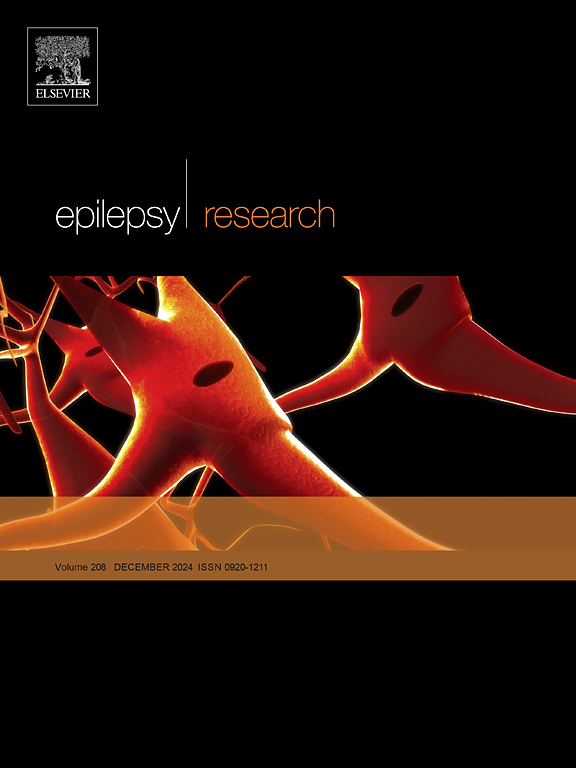Health care burden of access barriers to epilepsy care in the United States: A claims-based analysis of payer channels
IF 2
4区 医学
Q3 CLINICAL NEUROLOGY
引用次数: 0
Abstract
Objective
To describe access challenges, barriers to antiseizure medications (ASMs), and impact of ASM formulary policies for patients with epilepsy (PWE).
Methods
Observational study of de-identified claims from an all-payer claims database (2014–2021) and a formulary/payer policy database. Adults prescribed ≥ 1 ASM following initial epilepsy diagnosis, with continuous medical/pharmacy benefits, were included. Demographic characteristics, proximity to/use of a neurology health care professional (HCP), health care resource utilization (HCRU), and costs were assessed.
Results
In total, 35,351, 33,339, and 24,722 PWE with commercial, Medicare, and Medicaid insurance, respectively, were included. The Medicare group was older, had a higher comorbidity index score, more males, and fewer non-White and Hispanic individuals versus other groups. Most (> 58 %) commercially-insured PWE had coverage to all six first-generation ASMs examined, six to 12 second-generation ASMs, and all four third-generation ASMs; coverage rates were higher for Medicaid while data for Medicare were incomplete. Most commercial and Medicaid PWE had no access requirements to first-generation ASMs; approximately two-thirds and half of patients had access requirements for second- and third-generation ASMs, respectively. Although > 90 % of PWE used a neurology HCP during follow-up, only about one-third lived within proximity. Of PWE with formulary data (N = 77,787), > 80 % and < 8.0 % were prescribed second- and third-generation ASMs, respectively. There were no clear patterns in epilepsy-related HCRU/cost.
Conclusions
Data revealed difficulties in neurologist access and predominant use of second-generation ASMs, despite access restrictions for many PWE, suggesting obstacles in accessing treatment and specialist care.
美国癫痫治疗可及性障碍的卫生保健负担:基于索赔的付款人渠道分析
目的探讨抗癫痫药物的可及性、障碍及抗癫痫药物处方政策对癫痫患者的影响。方法对2014-2021年全付款人索赔数据库和处方/付款人政策数据库中的去识别索赔进行观察研究。纳入初始癫痫诊断后处方≥ 1 ASM的成人,并持续获得医疗/药学益处。评估了人口统计学特征、接近/使用神经内科卫生保健专业人员(HCP)、卫生保健资源利用率(HCRU)和费用。结果共纳入35,351名、33,339名、24,722名具有商业、医疗和医疗补助保险的PWE。与其他组相比,医疗保险组年龄较大,合并症指数得分较高,男性较多,非白人和西班牙裔个体较少。大多数(> 58% %)商业保险的PWE覆盖了所有6个第一代asm, 6到12个 第二代asm和所有4个第三代asm;医疗补助的覆盖率更高,而医疗保险的数据不完整。大多数商业和医疗补助PWE没有获得第一代asm的要求;大约三分之二和一半的患者分别有获得第二代和第三代asm的需求。虽然>; 90 %的PWE在随访期间使用了神经病学HCP,但只有约三分之一的人住在附近。在有公式数据的PWE中(N = 77,787),>; 80 %和<; 8.0 %分别开第二代和第三代ASMs。与癫痫相关的HCRU/cost没有明确的模式。结论数据显示,尽管许多PWE有准入限制,但神经科医生难以获得和主要使用第二代asm,这表明在获得治疗和专科护理方面存在障碍。
本文章由计算机程序翻译,如有差异,请以英文原文为准。
求助全文
约1分钟内获得全文
求助全文
来源期刊

Epilepsy Research
医学-临床神经学
CiteScore
0.10
自引率
4.50%
发文量
143
审稿时长
62 days
期刊介绍:
Epilepsy Research provides for publication of high quality articles in both basic and clinical epilepsy research, with a special emphasis on translational research that ultimately relates to epilepsy as a human condition. The journal is intended to provide a forum for reporting the best and most rigorous epilepsy research from all disciplines ranging from biophysics and molecular biology to epidemiological and psychosocial research. As such the journal will publish original papers relevant to epilepsy from any scientific discipline and also studies of a multidisciplinary nature. Clinical and experimental research papers adopting fresh conceptual approaches to the study of epilepsy and its treatment are encouraged. The overriding criteria for publication are novelty, significant clinical or experimental relevance, and interest to a multidisciplinary audience in the broad arena of epilepsy. Review articles focused on any topic of epilepsy research will also be considered, but only if they present an exceptionally clear synthesis of current knowledge and future directions of a research area, based on a critical assessment of the available data or on hypotheses that are likely to stimulate more critical thinking and further advances in an area of epilepsy research.
 求助内容:
求助内容: 应助结果提醒方式:
应助结果提醒方式:


